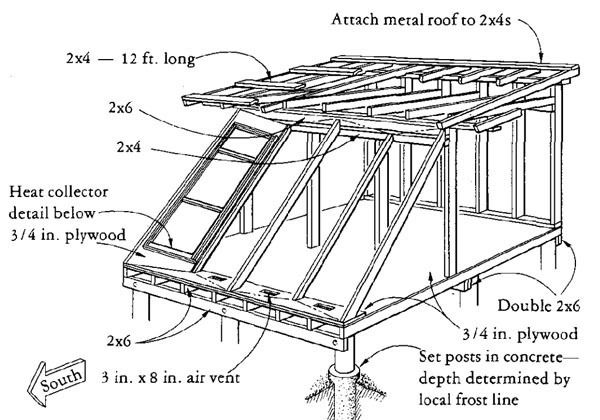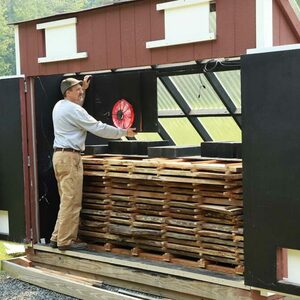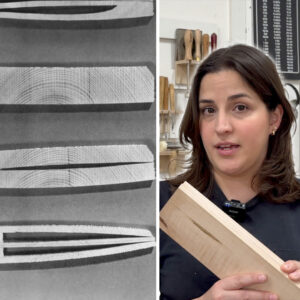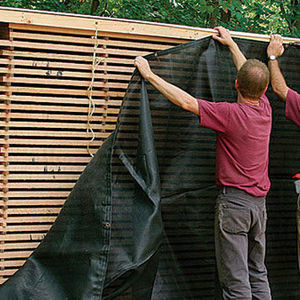
Synopsis: Curtis L. Johnson of Madison, Wisconsin, has designed and built a sun-powered kiln for drying small quantities of furniture-grade lumber. Johnson’s kiln is slower than a steam kiln, but gentler. Paul J. Bois, a wood drying specialist, writes in this quick article about how the kiln is built and works, how Johnson monitors it, and what the moisture rates are as the wood dries, winter and summer.
Curtis L.Johnson of Madison, Wis., has designed and built a sun-powered kiln for drying small quantities of furnituregrade lumber. His kiln is slower than a steam kiln (Fine Woodworking, Spring ’77), but it is gentler. The boards emerge bright and clear, with virtually no checking.
The kiln is an insulated, stud-framed wooden box that measures 10 ft. wide and 12 ft. long at floor level. It holds 800 bd. ft. of lumber in two stickered piles. The south wall slopes 40° from the vertical and is enclosed by storm windows of single-strength glass facing solar collector panels. Each collector consists of a flat box whose front is sheet metal painted flat black and whose back is a sheet of hardboard. An air space of 1-1/2 in. separates the glass from the collectors. The bottom of each collector is vented and the top is open.
Johnson piles the lumber in equal stacks, well stickered, leaving a central plenum 18 in. wide. Two overhead fans, spaced evenly atop the 8-ft. load, each deliver 1,200 cubic feet of air per minute into the plenum. Hinged baffles hanging from the fans ensure that all the air is driven down between the two stacks and out between the stickered boards. A thermostat turns on the fans when the interior temperature reaches 80° F. Two floor vents, each 4 in. by 10 in., admit outside air to the central plenum. The vents are screened against rodents and can be gradually closed as drying progresses, to keep the relative humidity as low as possible.
The sun heats the kiln as high as 130° F in summer and 90° F in the Wisconsin winter. The temperature climbs as the moisture content of the lumber drops below 20%, because evaporation is slower and its cooling effect is less.
To monitor the drying, Johnson cuts a sample from a representative board, weighs it, dries it in an oven and reweighs it. This allows him to calculate the initial moisture content, and he repeats the process throughout the run. Drying time depends on species, initial moisture content, thickness, season and latitude. Madison’s latitude is 43° north.
On July 15, 1975, Johnson loaded a green stack of 4/4 cherry at 60% MC and a stack of 4/4 white oak that had been air dried to 15% MC. Fifty-two days later, the cherry had dried to 6% MC and the oak to 7-1/2% MC. The following July 14, he loaded the kiln with 2×4 cottonwood studs at 130% MC and 4/4 black walnut at 85 % MC. After 47 days of excellent drying weather, moisture contents had reached an average of 10% and 12%, respectively.
For the full article, download the PDF below:
Fine Woodworking Recommended Products

Ridgid R4331 Planer

AnchorSeal Log and Lumber End-Grain Sealer

DeWalt 735X Planer






















Log in or create an account to post a comment.
Sign up Log in